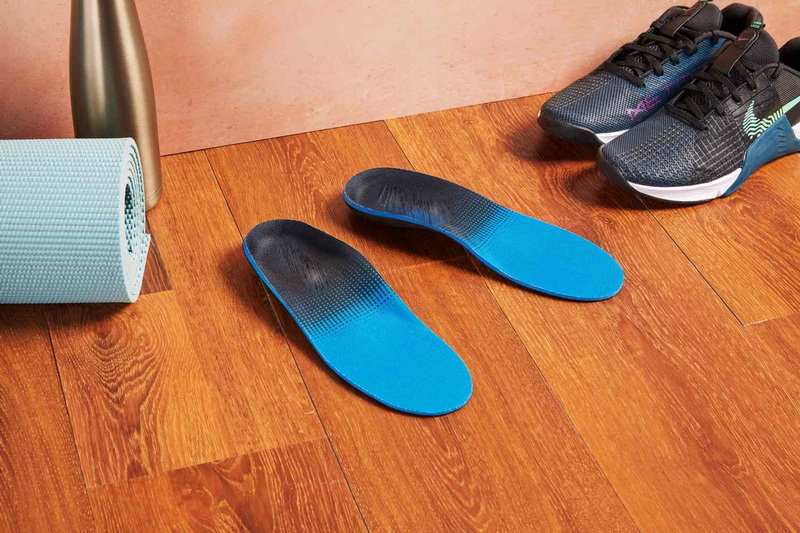










Content Menu
● The Mechanics Behind Arch Support
● Arch Alignment and Body Mechanics
● Step-by-Step: Using Arch Insoles
● Arch Support and Biomechanics
● Maintenance Tips for Arch Insoles
● FAQs
>> 1. How do arch insoles support my feet?
>> 2. Can arch insoles help with flat feet?
>> 3. What materials are arch insoles made from?
>> 4. How do I choose the right arch insole?
>> 5. How often should arch insoles be replaced?
Arch insoles are essential for maintaining foot health, promoting body alignment, and providing comfort in daily activities and sports. These advanced inserts are engineered to support the foot's anatomical arches, offering relief from discomfort and preventing long-term injuries. Understanding how arch insoles work helps users—especially international brands, wholesalers, and manufacturers—make informed choices for their footwear products and OEM solutions.

Arch insoles are specialized shoe components designed to elevate, cushion, and support the natural arches of the feet. Unlike standard foam or flat inserts, arch insoles have contoured structures that fit into footwear, providing targeted support through engineered shapes and materials like foam, gel, neoprene, or plastics.
Arch insoles are crafted for various foot types, including flat feet, high arches, and neutral arches, utilizing heat moldable or pre-shaped technologies to offer tailored comfort and stability.
The foot arch performs a spring-like function, absorbing shock and compressing when feet strike the ground. This mechanism conserves up to 17% of the mechanical effort required for movement via compression and recoil, much like the bounce of a rubber ball. Arch insoles reinforce this natural system by:
- Distributing weight evenly across the foot.
- Reducing localized pressure and fatigue.
- Enhancing energy return during movement.
- Assisting the windlass mechanism for propulsion.
By maintaining proper alignment and supporting the arches, insoles help absorb shock, stabilize walking or running, and prevent strain on tendons and ligaments in the foot.
Arch insoles come in a variety of forms to address different needs:
- Heat Moldable: These utilize heat to customize the contour to an individual's arch for a precise fit.
- Warm/Wool: Designed for insulated support in cold climates, combining warmth and structure.
- Foam-Based: Lightweight, breathable, and shock-absorbing options ideal for casual or athletic use.
- Plastic or Semi-Rigid: Provide robust support to maintain foot shape in high-demand situations.
Prolonged misalignment of the foot arch can lead to cascading issues through the body—affecting ankles, knees, hips, and even the lower back. Arch insoles restore natural alignment by realigning the foot from the ground up, redistributing load, and minimizing the risk of over-pronation or supination.
- Improved posture and balance.
- Reduced excessive stress on joints.
- Enhanced stability and comfort for physical activities.
1. Open shoe laces fully and remove original insole.
2. Place the arch insole heel-first, ensuring it touches the toe and heel counter.
3. Tighten laces for secure fit and optimal heel contact.
4. Walk to test stability and comfort.
Arch supports provide a range of benefits, including:
- Distributing pressure across the foot, preventing pain and injury.
- Absorbing impact forces for greater comfort.
- Preventing harm caused by improper foot placement.
- Improving overall balance and stability in motion.
For those with flat feet or fallen arches, these insoles maintain arch shape, offer structured support, and help minimize the risks of conditions like plantar fasciitis, shin splints, and knee pain.

For international brands, manufacturers, and wholesalers, partnering with leading OEM arch insole factories in China and beyond provides access to advanced designs, custom moldable options, and 3D biomechanical technology. Features include:
- Breathability and cushioning for enhanced comfort.
- Ergonomic design validated through rigorous testing.
- Compatibility with various shoe styles and custom orthotics.
Advanced insoles reinforce the medial longitudinal arch, aiding in efficient force transfer during propulsion and optimizing elastic recoil. These semi-rigid insole designs facilitate quicker compression and energy return, complementing the Achilles tendon during dynamic activities.
- Enhanced force transfer for sports and heavy-duty use.
- Faster compression and rebound for efficient movement.
- Replace insoles regularly for optimal support and hygiene.
- Ensure proper cleaning to prevent odor and wear.
- Rotate between pairs for different activities.
Arch insoles are a transformative solution for foot comfort, alignment, and injury prevention. By supporting the foot's anatomical arches, they not only enhance comfort but also improve biomechanical efficiency and overall health. Whether for OEM custom products, retail solutions, or personal use, understanding how arch insoles work enables brands and consumers to invest wisely in quality and performance.

Arch insoles elevate and reinforce the anatomical arches of the foot, distributing pressure evenly, improving shock absorption, and maintaining alignment for overall comfort and reduced injury risk.
Yes, arch insoles for flat feet provide structured support, stabilizing the arch, reducing excessive pronation, and relieving pain associated with collapsed arches.
They can be made from foam, gel, plastic, neoprene, and wool—each offering different levels of cushioning, warmth, and support.
Select an insole based on arch type (low, neutral, or high), intended activity (casual, sports, or heavy-duty), and comfort preferences. Heat-moldable and customizable options are ideal for a tailored fit.
Replace arch insoles every 6–12 months or as soon as they show signs of wear, lack of support, or reduced comfort.